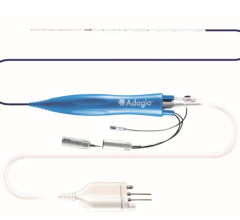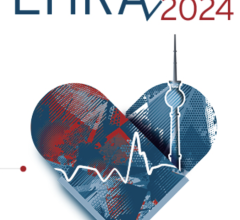
Getty Images
August 29, 2023 — The European Society of Cardiology (ESC) Guidelines on acute coronary syndromes are published online in European Heart Journal.1 The document covers the management of unstable angina and all types of acute myocardial infarction.
“Time is critical in acute coronary syndromes. When an artery supplying the heart with blood becomes blocked, the quicker we open the artery and restore flow, the less damage occurs to the heart muscle,” said Guidelines task force chairperson Professor Robert Byrne of the Mater Private Network and RCSI University of Medicine and Health Sciences, Dublin, Ireland. “Chest pain that lasts for more than 15 minutes and/or recurs within one hour should alert the public to contact the emergency medical services immediately, day or night. Other symptoms include sweating, pain in the shoulder or arm and indigestion.”
“Heart disease is the number one cause of death in women and men. A common misconception is that acute coronary syndromes primarily affect men, but women are also at risk and should seek immediate medical help if they have symptoms. Concerningly, several studies have suggested that acute coronary syndromes are underrecognized and undertreated in women but in general, women and men should receive the same treatments. Healthcare providers must make a concerted effort to ensure that women receive evidence-based care,” said Guidelines task force chairperson Professor Borja Ibanez of the National Centre for Cardiovascular Research (CNIC) and Fundación Jiménez Díaz University Hospital-CIBERCV, Madrid, Spain.
The heart requires a constant supply of blood to function normally. Blood flow can suddenly reduce or stop when a clot forms in an artery supplying the cardiac muscle, and this is known as acute coronary syndrome. The subtypes of acute coronary syndromes are defined according to the severity of blood flow reduction and its consequences: unstable angina (when no irreversible cardiac muscle damage occurs) and myocardial infarction, also called heart attack (when there is irreversible loss of muscle). Myocardial infarction can be further divided into complete and partial blockages. Dr. Ibanez said: “One of the key aims of these Guidelines is to highlight that acute coronary syndromes encompass a spectrum of conditions. Some patients have mild symptoms while others become critically ill very quickly. Despite this, much of the management follows the same principles, and this document provides a comprehensive overview.”
The Guidelines provide detailed advice on treatment, which includes medications such as blood thinners (anticoagulant and antiplatelet therapy). Most patients have a coronary angiogram, which uses X-ray images to see the heart’s arteries. When an artery supplying the heart is completely blocked, emergency insertion of a stent via a catheter in the wrist should be performed in a specialist center. Patients in geographically remote areas without a specialist center may instead receive an intravenous clot dissolving drug. When there is no complete blockage, the treatment options are stent insertion, open chest bypass surgery or medical therapy alone.
Long-term management is crucial after an acute coronary syndrome, as patients are at increased risk of a repeat event. Management includes medications such as antiplatelets and aggressive control of cholesterol levels. Patients should attend a supervised cardiac rehabilitation program where they will be encouraged to adopt healthy lifestyle changes, including increasing activity levels, eating a balanced diet, quitting smoking, and taking steps to address psychosocial stress if relevant. “This will reduce the chances of recurrent events and improve quality of life,” said Professor Byrne. “Some patients who experience heart attacks are at risk of developing heart failure because of large damage to the heart muscle and additional medications may be given to reduce this risk.”
The Guidelines include a new section on the management of acute coronary syndromes in patients with cancer. Those with cancer have an elevated risk of acute coronary syndromes due to shared risk factors such as smoking, type of cancer, and treatment with chemotherapy and radiotherapy. Rates of cancer continue to increase and better treatments mean that more patients with cancer survive, and cardiovascular disease is the leading cause of death. Those with active cancer are at high risk of bleeding and the Guidelines state that this should be taken into account in decisions about management. The Guidelines recommend an invasive strategy (e.g. angiography and insertion of stent if needed) in patients with active cancer and an expected survival of at least six months. A temporary interruption of cancer therapy is recommended when it is suspected to be a contributing cause of acute coronary syndrome.
Also new is a section on patient perspectives. The Guidelines recommend assessing and adhering to individual patient preferences, needs and beliefs, and ensuring that patient values are used to inform all clinical decisions. The Guidelines also advise including patients in decision-making as much as their condition allows and informing them about the risk of adverse events, radiation exposure and alternative options.
For more information: www.escardio.org
Find more ESC23 conference coverage here
References and notes
- 2023 ESC Guidelines for the management of acute coronary syndromes. European Heart Journal. 2023. https://doi/10.1093/eurheartj/ehad191


 April 10, 2024
April 10, 2024 








